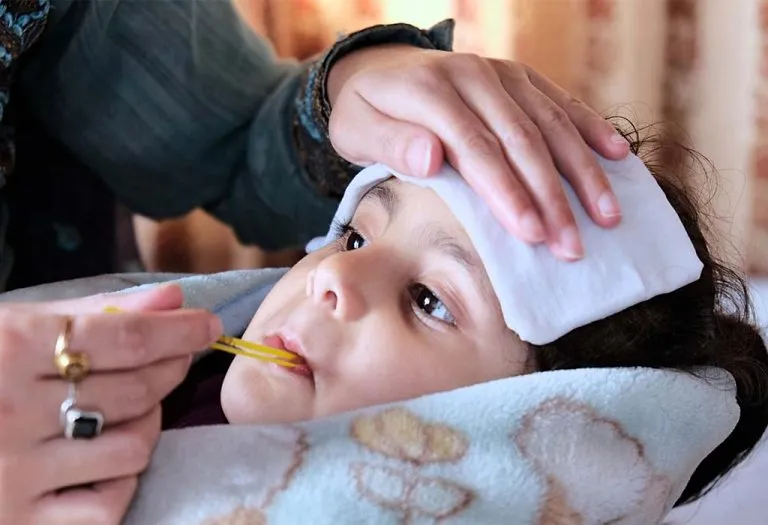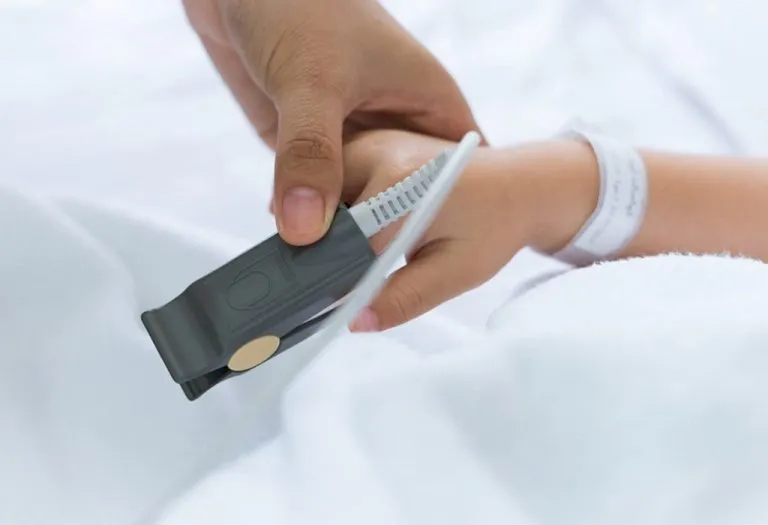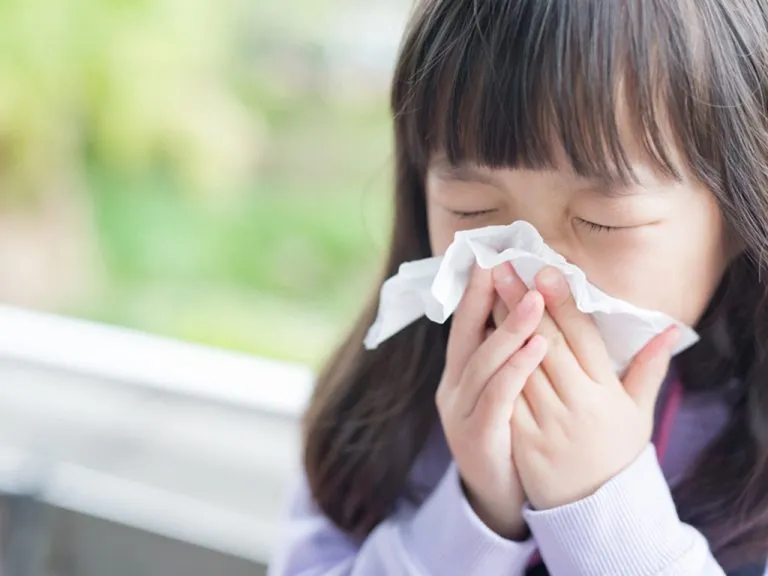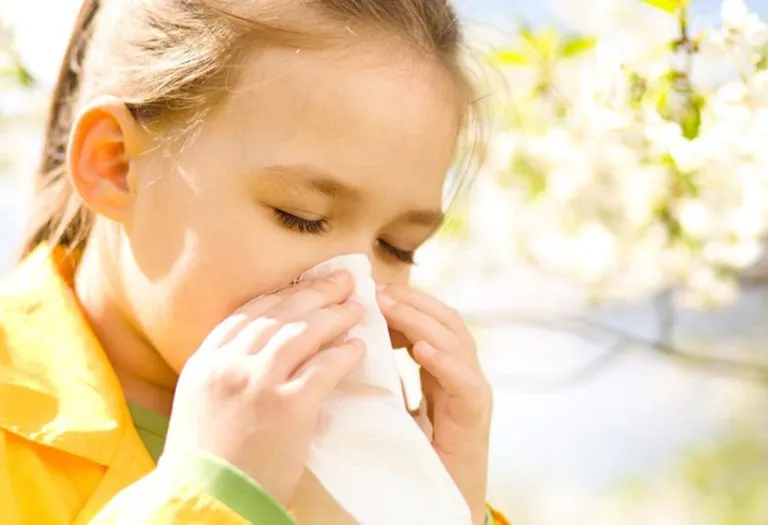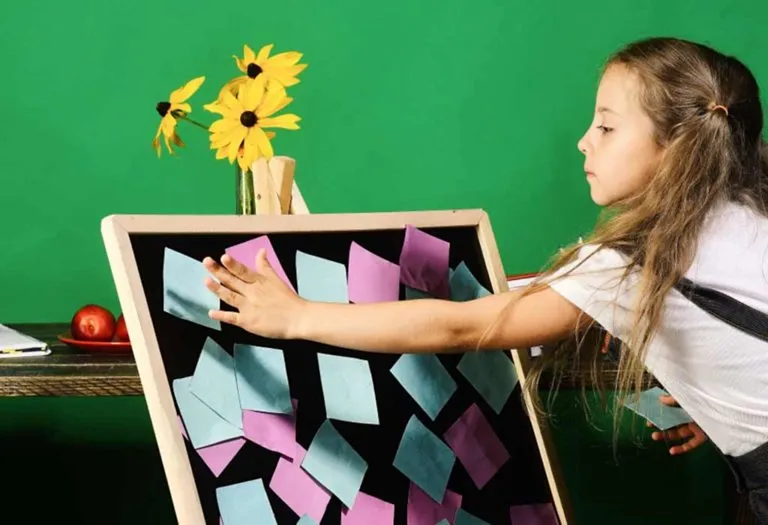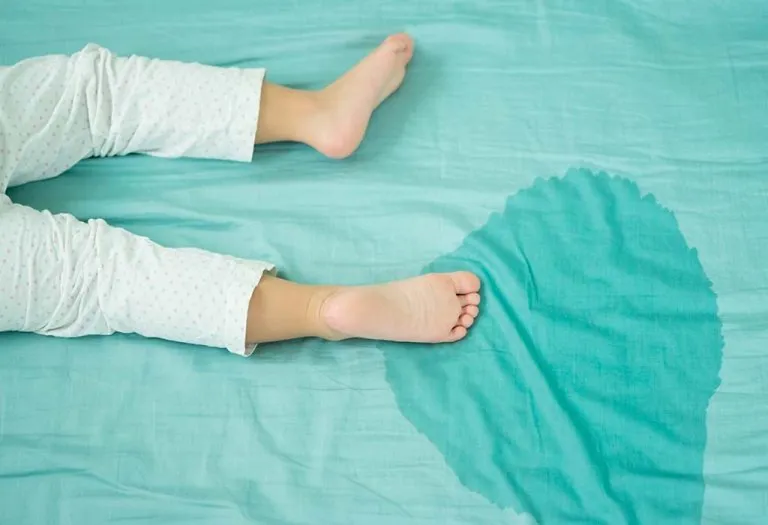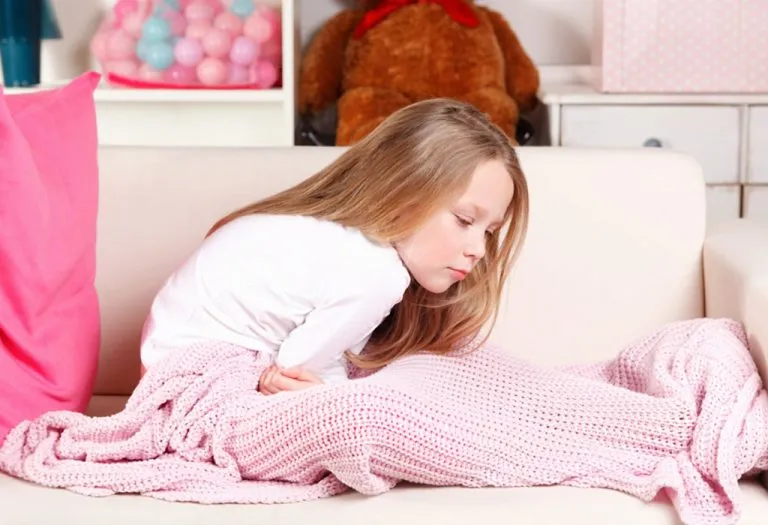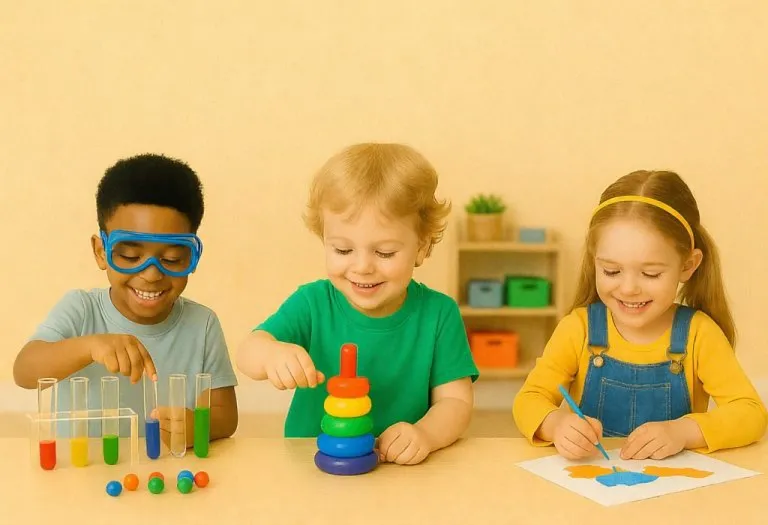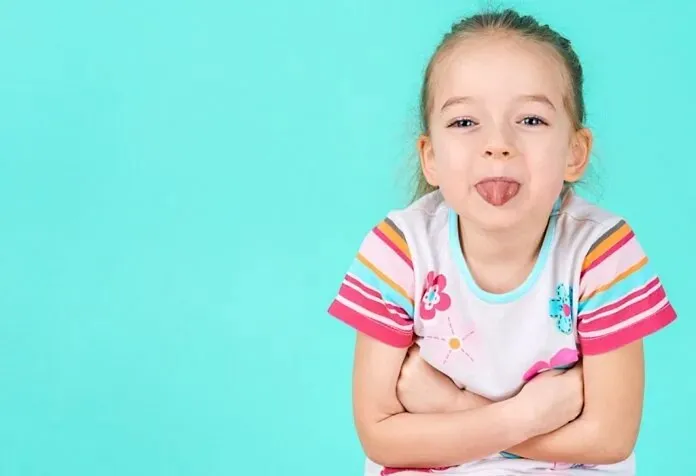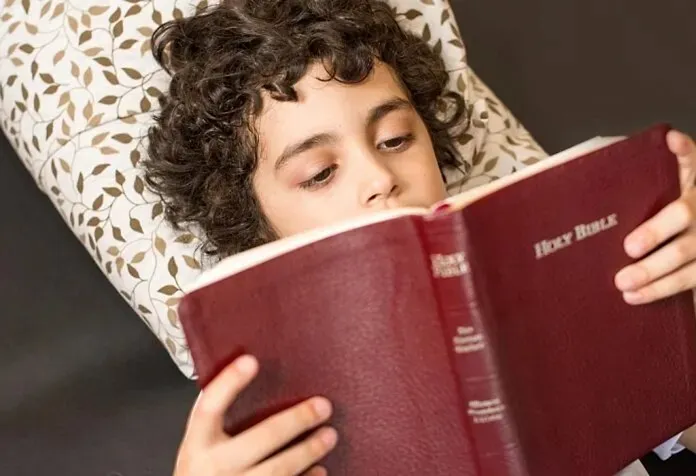Fever in Children at Night – Causes and Tips to Manage It
- Why Do Kids Usually Get Fever at Night?
- Should You Wake Your Child Up to Check His Temperature At Night?
- How to Help Your Child With Fever to Get Through the Night?
- When Should You See a Doctor?
- FAQs
A sick child or a toddler is always a cause of worry for parents, no matter what. If there are recurring episodes of fever at night in children, it could be especially unsettling for parents during the nighttime, as fever can range from mildly irritating to, in rare situations, potentially serious. Since a fever is a strong indication that your child is fighting an infection, understanding why the temperature spikes around evening time and what’s the right way to keep it under control is extremely important. Knowing how to respond effectively to a child’s fever at night can help ease both the child’s discomfort and the parent’s concerns.
Why Do Kids Usually Get Fever at Night?
If you always wonder, ‘Why does my child only have a fever at night?’ let us tell you that it is common but worth noticing. You might have observed that fever in children comes back at night while sleeping, even if it has gone down during the daytime. As a biological process itself, our body temperature tends to elevate towards the evening to keep things going well. In the event of fever, what might have seemed like a mild temperature increase may suddenly be higher than usual as evening dawns. Understanding how high the fever is and looking for signs that accompany it can help you gauge the severity of the situation and take appropriate action.
It is necessary to note that fever is not a disease but one of the symptoms of an underlying condition. If your child experiences recurring episodes of fever, whether day or night, it is advisable to monitor their temperature and symptoms and consult a paediatrician for an appropriate diagnosis without any further delay.
Should You Wake Your Child Up to Check His Temperature At Night?
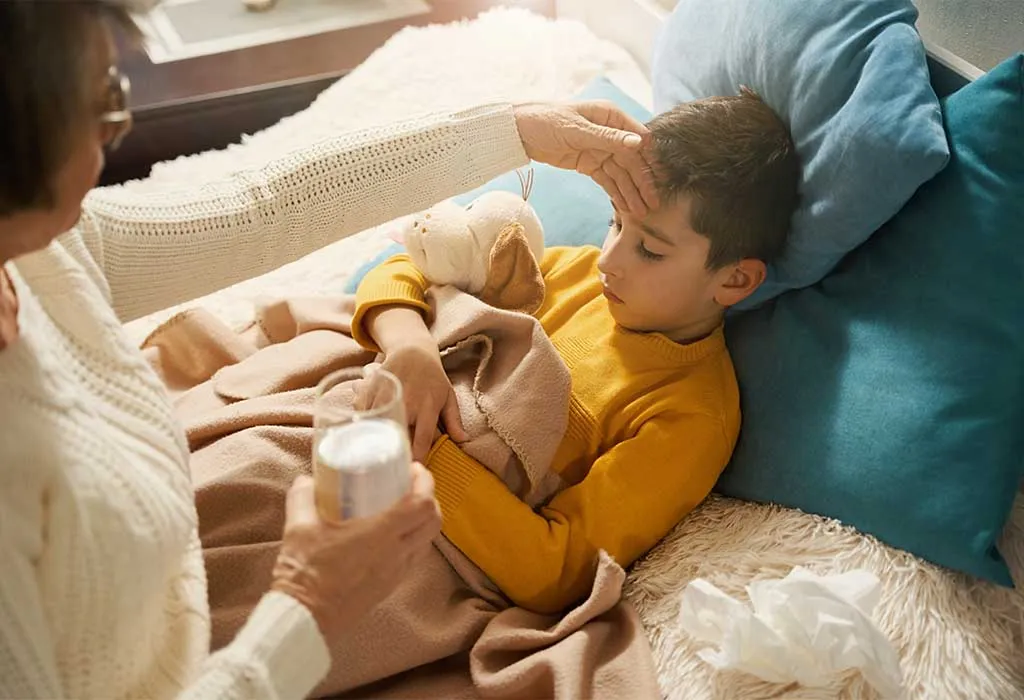
In general, it would not be necessary to wake your sleeping child specifically to check their temperature unless there are specific indications to do so. In most cases, you can always take the temperature or give some quick medication to your child without waking them up fully. Interrupting a child’s sound sleep unnecessarily can disrupt their rest, make them cranky, and potentially prolong their recovery from illness. If your child is able to eat and drink successfully and has no stomach pain, watchful waiting at home for the fever to go down using given medicines is advisable.
In cases where the fever is severe, your child won’t be able to sleep by themselves and will tend to wake up constantly or stay awake throughout the night. In this condition, it is advisable to monitor their temperature more closely to ensure it remains within a safe range and give them fever medication (only recommended by the doctor) to give them relief. However, if your toddler is around 2-6 months old and has a fever ranging from 100-103 degrees, you should reach out to your doctor immediately.
If your child is exhibiting unusual or worrying symptoms along with fever, like wheezing, difficulty in breathing, pain, or vomiting, visit the doctor without any delay.
How to Help Your Child With Fever to Get Through the Night?
Once you have identified a fever in your child at night, the very next move is to manage it smartly through the night. Here are some ways to combat your child’s fever:
1. Keep Them Hydrated
One of the highly recommended tips to combat baby and toddler fever at night is to ensure bodily fluids stay at the right level. Fever makes children lose fluids faster than usual through sweating, frequent urination, or vomiting. If your little one is in the breastfeeding stage, give them your breast milk often. For babies and toddlers on solids, give them water, pasteurised juice (room temperature), fresh and warm homemade soups, ice pops, etc. Opt for rehydration equivalents that are given orally to keep the electrolyte levels in the body at an optimal level. Avoid caffeinated drinks like colas, sodas, or tea, as they worsen dehydration and make children pee more often.
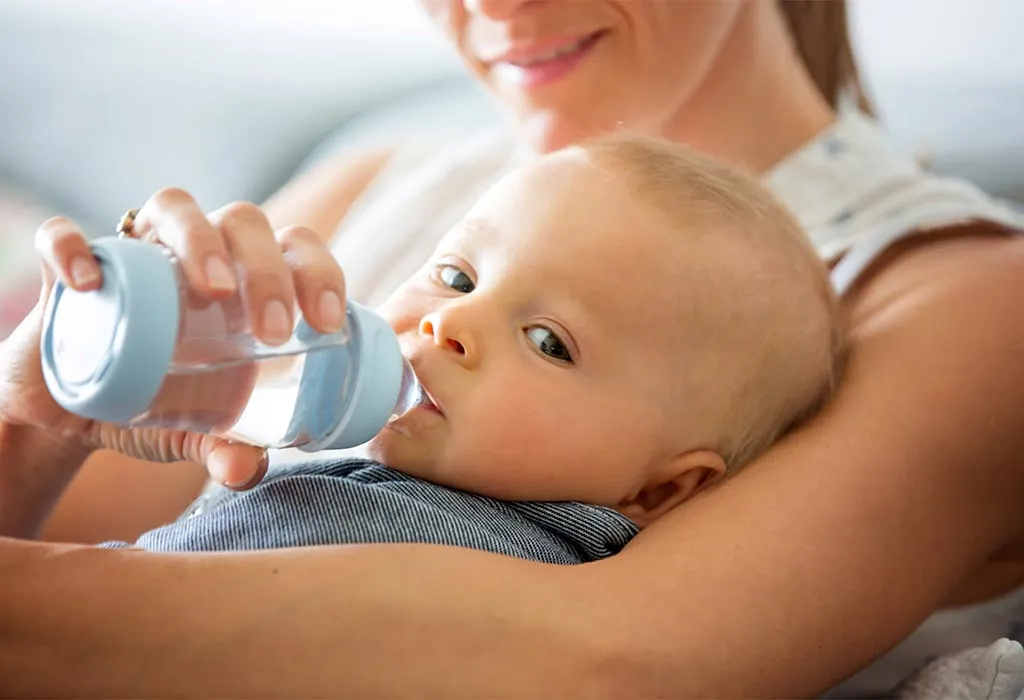
2. Let the Child Be Dressed Comfortably
The sweating that occurs during fever or as the fever subsides is a natural process. Forcing the sweat to take place is not going to help the fever to come down in any way. Therefore, avoid bundling up your child in multiple layers of clothes. Dress them comfortably and use a blanket if your child feels cold.
3. Use Fever Medicine Only As a Last Scenario
The slightest fever in your child’s body does not warrant any action from a fever-relieving medicine. The human body is capable of combatting slight fevers quite easily, and that builds its immunity, too. If the fever tends to rise about 102-103 degrees, then the administration of the fever medicine would be required just before you put your child to sleep.
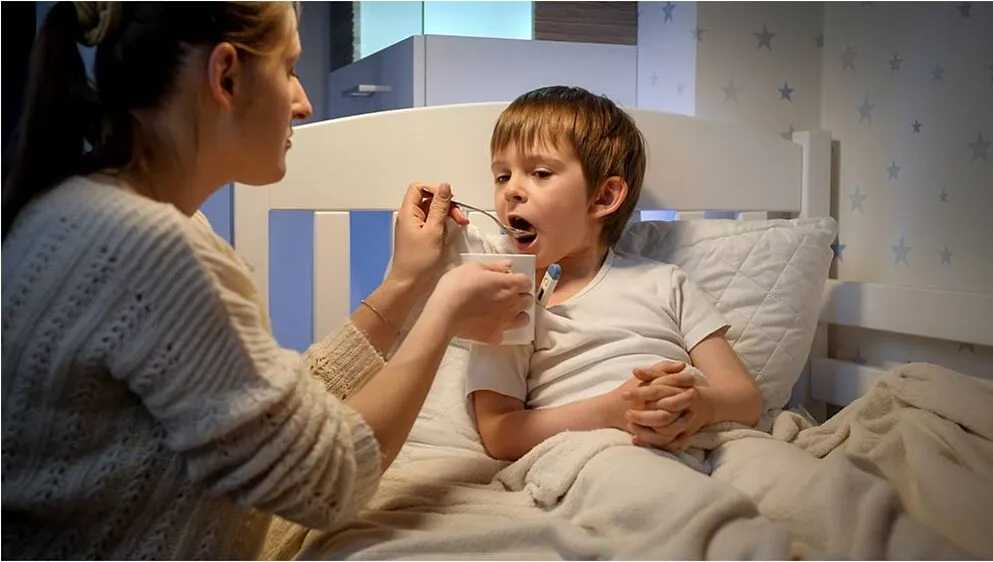
4. Choose the Right Kind of Medicine to Combat Fever
Not all fever medicines are equivalent, and some should not be administered to children less than 2 years old at all. Keep away from aspirin for children at all costs since the consequences of its consumption are harmful as well as life-threatening. Ibuprofen or acetaminophen variants for children usually do the trick, although it’s best to contact your doctor beforehand and keep medicines for emergencies.
5. Keep Away From Any Exotic Remedies
A lot of “tricks” or “remedies” tend to come from uninformed sources that mention weird techniques to counter the fever. These range from starving the child for a fever to applying ice packs all around or even alcohol-based baths. Please note that these are not helpful and can endanger the child.
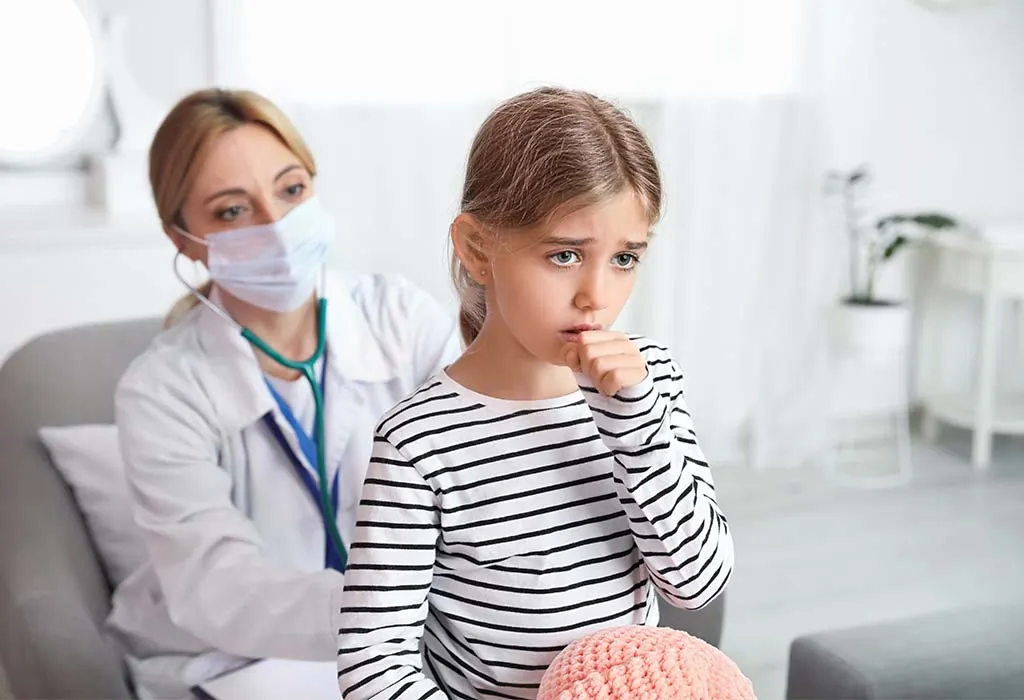
When Should You See a Doctor?
In most cases, the usual techniques of fever reduction and simple medication will take care of the problem. However, reach out to your doctor as soon as possible if any of the following signs are visible.
- The body temperature extends to 100.4˚F (38˚C) or higher in babies younger than 3 months of age.
- Fever of and above 104 degrees, which shows no signs of going down or keeps coming back.
- Fever close to 106-107 degrees can lead to brain damage.
- Signs of seizures or convulsions in the child due to fever.
- Extreme lethargy and loss of appetite in the child.
- Fever with rash, drowsiness, and inability to eat or sleep.
- Fever with continuous coughs and inability to eat or sleep could indicate pneumonia.
- Extreme dehydration
- Stiff neck, extreme headache, sore throat, abdominal pain, vomiting, or diarrhoea.
FAQs
1. Why does my child’s skin feel hotter at night even if the fever hasn’t increased?
Children’s bodies often respond to temperature regulation differently at night, and blood flow to the skin can increase, making them feel warmer. Additionally, a sleeping position, like lying on their back or side, can retain heat, giving the impression that your child has fever only at night even if the actual temperature hasn’t changed.
2. Could environmental factors like room temperature or clothing affect nighttime fevers?
Yes, environmental factors can influence how a fever feels at night. Over-bundling with blankets or thick clothing, or even a warm room, can raise body temperature perception. If your child has a fever, keeping the room at a comfortable temperature and dressing them lightly can help prevent their fever from feeling worse.
3. Are there specific infections that tend to cause fevers only at night?
Yes, certain viral and bacterial infections, like those causing respiratory or urinary tract infections, may trigger fevers that seem more pronounced at night. The immune system’s activity level increases overnight, which can lead to higher evening fevers for these specific infections.
This was all about what to do in case your child’s fever spikes at night. The emergence of night fever in babies is a cause of worry for sure and will keep parents up the entire night to help them through it. This vigilance will help your child through the problem and keep them safe for days to come as well.
References/Resources:
1. Fever Without Fear: Information for Parents; American Academy of Pediatrics; https://www.healthychildren.org/English/health-issues/conditions/fever/Pages/Fever-Without-Fear.aspx
2. Fever (High Temperature) In Kids; Cook Children’s Health Care System; https://kidshealth.org/CookChildrens/en/parents/fever.html
3. Fever in children: Overview; InformedHealth.org [Internet]; Institute for Quality and Efficiency in Health Care (IQWiG); National Library of Medicine; https://www.ncbi.nlm.nih.gov/books/NBK279455/; December 2013
4. Sakakihara. Y; Children’s Fever at Night: When do I see a doctor?; Child Research Net; https://www.childresearch.net/projects/health/2016_04.html; September 2016
5. Fever; Nationwide Children’s Hospital; https://www.nationwidechildrens.org/conditions/fever
6. High temperature (fever) in children; NHS; https://www.nhs.uk/conditions/fever-in-children/
7. Fever; Mayo Clinic; https://www.mayoclinic.org/diseases-conditions/fever/symptoms-causes/syc-20352759
Recurrent Fever in Kids
Viral Fever in Children
Viral Infection in Kids
Typhoid in Children
Was This Article Helpful?
Parenting is a huge responsibility, for you as a caregiver, but also for us as a parenting content platform. We understand that and take our responsibility of creating credible content seriously. FirstCry Parenting articles are written and published only after extensive research using factually sound references to deliver quality content that is accurate, validated by experts, and completely reliable. To understand how we go about creating content that is credible, read our editorial policy here.






